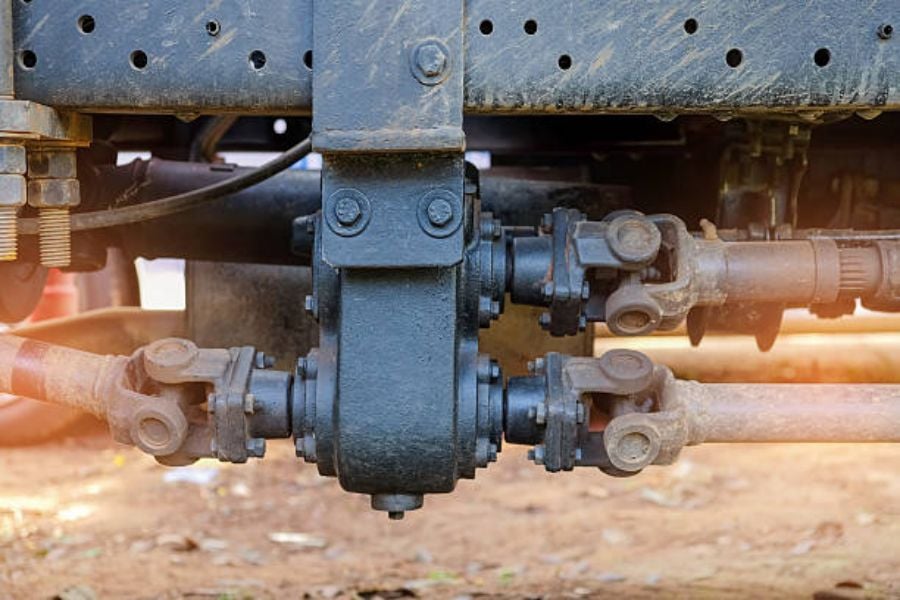What is a pto shaft of tractor?
A Power Take-Off (PTO) shaft of a tractor is a mechanical device that transfers power from the tractor's engine to another power machinery or equipment. It is essentially a drive shaft that rotates to transmit power to rotary implements such as harvesters, mowers, tillers, balers, and others. The PTO shaft of a tractor rotates at a standardized speed of 540 or 1,000 revolutions per minute (RPM), which is used to calculate the power take-off value or PTO horsepower.
Parts of a PTO Shaft of Tractor
A basic PTO shaft of a tractor consists of three main parts: the tractor end, the implement end, and the driveline. The tractor end is where the PTO shaft attaches to the tractor's PTO output, which is usually triangular in shape with three or four locking pins. The implement end is where the PTO shaft connects to the implement's input, which is often a splined drive shaft with a safety pin or collar. The driveline is the telescoping shaft that connects the tractor end and the implement end and adjusts to the varying distances between them during operation. Additional parts such as guards, bearings, couplings, and lubrication fittings may also be present.
Types of PTO Shaft of Tractor
There are various types of PTO shafts of tractors that are designed for different purposes and applications. The most common types are standard 540 RPM and 1,000 RPM, which differ in their speed and power output. Another type is the multi-speed PTO, which has two or three selectable speeds for versatility and fuel efficiency. A live PTO is a type that can engage and disengage the PTO shaft without affecting the transmission or clutch, allowing for clutchless shifting or stopping. A ground-driven PTO is a type that uses the tractor's wheels or rollers to provide power to the implement.
Function of a PTO Shaft of Tractor
The function of a PTO shaft of a tractor is to provide power to rotary implements that require a direct mechanical drive. Most implements such as mowers, tillers, and balers have their own internal gearbox that matches the PTO speed and output. When the tractor's engine is running and the PTO is engaged, the PTO shaft rotates and transmits power to the implement's gearbox, which in turn drives the implement's working parts such as blades, discs, or rollers. The PTO horsepower depends on the PTO speed, the engine horsepower, and the efficiency of the drivetrain.
Benefits of a PTO Shaft of Tractor
The use of a PTO shaft of a tractor offers several benefits to farmers and operators. One benefit is the versatility of using different types of implements with the same tractor, which reduces the need for multiple tractors or engines. Another benefit is the increased efficiency and safety of using mechanical power rather than manual labor or other energy sources such as electricity or hydraulics. A PTO shaft of a tractor also allows for customization and adjustment of the speed and torque of the implement, depending on the soil, crop, or terrain conditions.
Maintenance of a PTO Shaft of Tractor
A PTO shaft of a tractor requires regular maintenance and inspection to ensure proper function and safety. Some common maintenance tasks include checking and replacing worn or damaged parts such as couplings, guards, and drivelines. Lubrication of the shaft and bearings is also important to prevent rust, corrosion, and wear. Safety shields or guards should be present and in good condition to prevent contact with rotating parts. Proper storage and handling of the PTO shaft of a tractor is also crucial to prevent damage or misplacement.
Risks and Hazards of a PTO Shaft of Tractor
Despite the benefits and convenience of using a PTO shaft of a tractor, there are also risks and hazards associated with it. One of the main risks is entanglement or crushing, which can occur when the operator or bystander gets caught by the rotating parts or the driveline comes apart. Another risk is the improper attachment or detachment of the PTO shaft, which can cause damage to the tractor or the implement. Other hazards include electrical shock, fire, or explosion due to the accumulation of debris or flammable materials near the PTO shaft.
Safety Tips for Using a PTO Shaft of Tractor
To minimize the risks and hazards associated with a PTO shaft of a tractor, operators and workers should follow some safety tips. One tip is to always turn off the engine and disengage the PTO before attaching or detaching the shaft. Another tip is to inspect the PTO shaft and the implement for any wear or damage before operation and replace any faulty parts. Operators should also avoid wearing loose-fitting clothing or jewelry near the PTO shaft and keep bystanders away from the work area. Additional safety measures such as training, signage, and personal protective equipment can also be implemented.
Conclusion
A PTO shaft of a tractor is a vital component of the modern agriculture industry, providing mechanical power to various implements and increasing efficiency, productivity, and versatility. However, it also poses risks and hazards if not maintained and operated properly. Thus, it is important to understand the parts, function, and maintenance of a PTO shaft of a tractor, as well as to follow safety guidelines and procedures.

